The words “full moon” in many languages

It is said that there are more than 6,000 languages worldwide (this is hard to imagine) and it is a fascinating concept to think, there are probably as many words for “full moon”.
Here we begin our little journey to the full moon. A few words about the fascinating quest of the greater purpose, that includes the full moon circulating through our lives. In layman’s terms and not always scientific (astronomy experts – don’t look too closely!). We would like to wish you illuminating moments. Enjoy!


It is said that there are more than 6,000 languages worldwide (this is hard to imagine) and it is a fascinating concept to think, there are probably as many words for “full moon”.
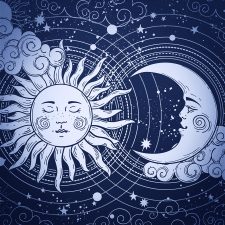
A full moon is when the Sun and the Moon are facing opposite, being in opposite direction from an Earth perspective.
This might feel astonishing if one imagines that the Moon is on one side, the Sun on the other and the Earth in between? Shouldn’t the Earth throw a shadow onto the Moon? Bingo – this is exactly what she does! But only when the Moon is exactly on the Earth orbit, the so called “ecliptic”. When this takes place, we speak of a lunar eclipse!

The Moon needs 27.33 days to circle around the Earth. Something that is also referred to as “sidereal time”. But because the Earth orbits the Sun, just like the Moon orbits the Earth, the Moon has to travel two further days in order to resume the same position to the Earth and Sun. This is then called the “sidereal time”. In order to determine the point of time of the reoccurring full moon, the sidereal time serves as basis.

We already know now that the moon month is mostly shorter than the calendar month, being on average approximately 29.5 days. If full moon falls on the first or second of a month, it is possible that another full moon occurs in the same month, for instance in July 2004:
Friday, 2 July 2004, 01:08:54 pm
Saturday, 31 July 2004, 08:05:06 pm
This event is also known as “blue moon”.

The answer is: “everywhere at the same time”. This refers to the so called Universal Time (UT) though, which is used for general astronomical events. We have already learnt that full moon is an astronomical event, where the moon, sun and the earth play a role by being in a specific position. So, full moon takes place at a specific time in the outer space. This point of time is specified by astronomers namely by the Universal Time.

There are multiple ways of approaching this question. If we look at it from a purely theoretical standpoint, we might be tempted to say that the full moon is infinitely short, since the phases of the moon are changing continuously. The moon is not yet quite full shortly before the full moon, and is already waning shortly afterwards.
However, there is a practical aspect that lets us quantify the full moon as a finite and measurable span of time: Since the Sun is significantly bigger than the Moon, its rays are able to reach just a little over half of the Moon’s surface. This means that the timespan in which the visible side of the Moon’s surface is irradiated (as seen from Earth) is longer than infinitely short.

Whether scientists, astrologers or esoterics, they agree on one thing: the moon influences earth and life on earth. For instance, it regulates the tides through its magnetism. Also continents feel the consequence of this magnetism and either raise or lower their position sometimes up to 26 cm.

In nature it is a known fact: for some animal species, mating takes place at full moon. However, the examples that can be found on this subject are rather simple. Full moon serves in some cases indirectly as the cause (for instance through the high water levels during the tides that the horseshoe crab uses to deposit its eggs) or also as the signal for both sexes of a species to begin at the exact same time to safeguard their future existence (a particular type of fly or also corals). It is understood that also wolves are led by full moon when it is time to mate.

… that people are looking for an argument at full moon or are especially happy …
… that if full moon is surrounded by a haze, a person dies …
… that you raise your hat three times to the moon (being a man) or you make a curtsey (being a woman), in order to protect yourself from misfortune until the next full moon …
… that whoever does not chink glasses with full moon at least once, does not deserve any happiness [Greek toast] …
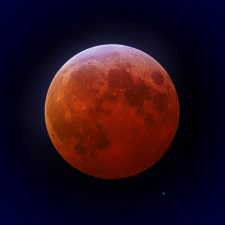
During a lunar eclipse, the Moon moves through the shadow of the Earth. Which means, that the Earth is positioned quite exactly between the Sun and Moon and casts its shadow onto the Moon. This is only possible at full moon and if some other requirements are met. Depending on whether the moon passes the partial or the core shadow of the Earth, we speak of a partial or total lunar eclipse.
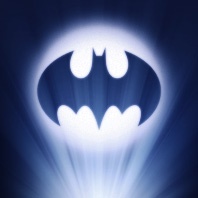
Who doesn’t know Batman, the comic hero who fights the sinister subjects of the big city at night as a bat man with super powers. Who has not seen him in movies or held one of the comic books in his hand? What we are mostly interested in, at this point, are not however, his impressive appearance, nor the trendy outfit, but the affinity to the full moon. Batman can be seen standing in front of the circular moon in countless images, his black cape blowing in the wind. And also the famous batman logo is always portrayed in connection with the moon, whether hovering against the light or as a full-moon-like light projection in the black night sky (the so-called »Bat-Signal«).

The American astronaut David Scott (* 1932) conducted an interesting experiment on the Moon, toward the end of the Apollo 15 mission in July/August 1971. In front of a running camera, he dropped a hammer (2.9 lb) and a falcon’s feather (0.06 lb), just to prove Galileo Galileis’ (1564–1641) thesis that objects fall to the ground with the same speed, regardless of their mass, provided the air resistance does not slow them down, as it is the case on Earth. On our planet, this experiment could only be demonstrated in a vacuum.
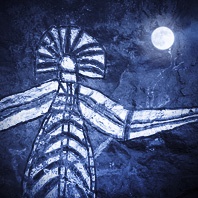
In Australia, the “southern land” (lat. terra australis), full moon has been shining for millennia for its natives, the Aboriginal and Torres Strait Islander people. According to estimates they inhabit this continent since more than 50,000 years, while Europeans only began to settle there 200 to 400 years ago. We would like to make a connection to the full moon, which is very much part of this fascinating culture, who, like many others, had to endure many wrongs during the course of more recent history.

Ian Fleming’s fictitious secret agent 007, of the British Secret Service MI6, has been fighting the villains of this world on screen for over 50 years, accompanied by technical knick-knacks, all sorts of explosions and always beautiful women. There are many night scenes and one should assume that the Moon should be included quite frequently … far from it! We were only able to spot one Bond flic where the full moon can be seen: MOONRAKER from 1979 – and only at the beginning and the end of the movie.

We are tapping again into the treasure chest of Old English stories and have come across the fairy tale »The Buried Moon« or »The Dead Moon«. This piece was published by the Australian historian Joseph Jacobs in 1894, as part of a fairy tale collection, but its origin lies much further back like so many folktales, and has been passed down by word of mouth over the centuries.

Shortly before Easter, we are taking a look at Christianity and notice that a very important event must have taken place at the full moon: the Last Supper of Jesus and his disciples. From a historical point of view, the Last Supper derives from the Jewish Passover feast (Seder), which traditionally takes place on the eve of Passover. This meal is being celebrated on the 14th Nisan, which is always the first full moon after the spring equinox – the beginning of spring. This is how later, the calculation of the Easter date had been determined: »Easter takes place on the Sunday after the first full moon in spring.«
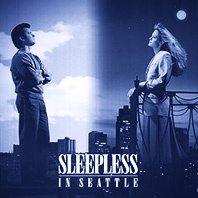
Who doesn’t know this movie, a classic amongst romantic comedies? Shot in 1993, with Tom Hanks as the architect Sam Baldwin and Meg Ryan as the journalist Annie Reed, who do not know each other but are still able to find one another thanks to Sam’s son Jonah, who recognizes that Sam and Annie belong together and for that, he leaves no stone unturned.
On the movie poster, you can see the full moon, just above Meg Ryan and we watched this movie for the 137th time to find out whether the full moon is also visible during the movie – wrong! Neither in the scene where Sam talks to the psychologist on the radio for the first time, while Annie listens in the car, nor in the closing scene in New York, and on the Empire State Building we can see the moonlight shining, although this would have certainly been a gain. Also with reference to the title and the addressed topic of sleeplessness, this would have been an obvious approach.

Although, one could easily presume that full moon influences the reproduction of many creatures, this has really only been proven for some species. One assumes this is the case with wolves, specific insects or crabs and also many humans vow not being able to do anything other than to look for the closeness of the other (or the same) sex at full moon. But absolutely certain are scientist only about one animal species that may not even be considered an animal by many: the corals. Here it has been established that reproduction is dependent on water temperature and moon light.
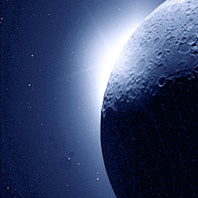
Just recently, NASA found out, during an examination of video material, that a relatively large explosion took place on the Moon on 17th March 2013, caused by the impact of a meteoroid. This was an approximately 15 inches large and 88 pounds heavy chunk, which hit the Moon’s surface with 56,000 mph. The explosive power is equivalent to 5 tons of TNT. The flash of light which lit up during the impact in the »Mare Imbrium«, was so bright that it was visible with the naked eye from Earth.

Towards the end of the 18th century, over 200 years ago, Germany was about to be conquered by a new style of painting: the romanticism. The objective was, just as we understand it today, to emphasise feelings. But it was much more than this …
It was about the self-conception of an entire generation of artists, poets and musicians, who were trying to oppose the, up until then, reigning reason of the enlightenment era and also the classicism that was concerned with order. They countered with irrational contents i.e. fantasy, infinity or transcendency. It was what Wassily Kandinsky (1866–1944) expressed about the artist in general at a much later point in time: “The fortune of an artist is the possibility, to express longing in forms.”